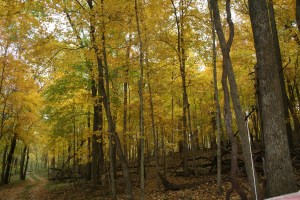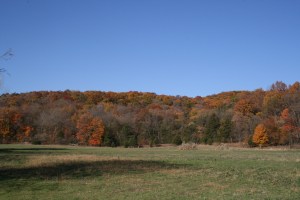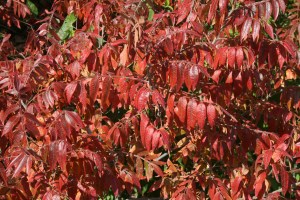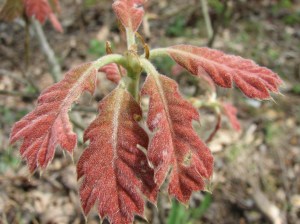This time of year I get asked about the leaves changing color pretty frequently. Sometimes by adults, sometimes by kids, even sometimes by hippies. Pretty much always after asking me, and before giving me time to answer, they hit me with their own answer. Sometimes it’s correct (hooray!) but usually it’s only partially correct. In the case of the hippies, no, that’s not Gaia’s inner skin or the tree’s aura peeking out—we’ll just clear that up right now.
**All the pics in this post are fairly huge. Click to see some of the colors close up. Steal pics if you want, but credit where due, please**
So, we’ve all heard that the colors we see in the fall are always there, hiding under the chlorophyll, and as the green chlorophyll breaks down the other colors show through. This is the partial truth I was talking about, but the devil is in the details.
The yellows and oranges come from a class of pigments called carotenoids, (root word of carrot, get it? Words are fun!) and they are underneath the chlorophyll. However, they begin breaking down at the same time as the greens, they’re just more stable so they do it slower in a “good color” year.
Fun Facts: Some of the yellow in leaves comes from a type of Carotenoid called ‘Lutein’. You might be going “where have I heard that word before…?”–it’s from eggs! The same pigment that makes egg yolks yellow colored is present in leaves (not just trees, leafy edible greens too!).
Also, some of the orange color is beta-carotene, which is what makes carrots orange. The underlying chemistry of our world is highly interconnected, check it out sometime.
So, we’ve covered what causes the oranges and yellows, but why, in some years, do the leaves not fully turn yellow and instead just fall off?
Typically, this is due to climate and overall stress on the tree.
Leaves attach to a tree with their petiole. At the base of that petiole there are two layers of cells right where it attaches to the twig. That area is called the abscission zone. The top layer is composed of weak walled cells and the bottom layer is made of special cells that can expand. In response to the waning sunlight, that bottom layer expands, breaking the weak top layer and popping off the leaf. In wet years, this layer expands slowly and the tree holds the leaf longer, allowing the chlorophyll to break down slowly and show lots of yellows and oranges. In dry seasons the pigments all break down quickly, leaving a brown leaf that is clipped off by a fast forming abscission zone. I like to imagine this like walking from your car into your office…on a nice day you will walk slowly and enjoy yourself, on a crappy day you just want to get from your car to the building!
The reds and purples are different and have some biological mysteries going on. Whereas the other colors really are there hiding under the leaf, the reds and purples are created inside the leaf and are highly dependent on the immediate climate. The group of pigments that are responsible for these colors are called anthocyanins.
We all know that the leaf is like a solar cell for the tree, right? They gather sunlight and use it to power the various processes needed to allow the tree to not only live, but also grow. Well, as the days begin getting shorter, the leaves start making anthocyanins. I won’t get into exactly why they start making more of these as this is a debated topic among professionals and nobody wants to see botanists fight — Latin gets thrown around, the puns are terrible, it’s a whole scene, man.
Anyway, if the day is bright and sunny those little solar panels are cranking out the sugars in the form of anthocyanins. As the temperature decreases, the activity inside the cell slows, so if you have a warm sunny day that gets chilly as soon as the sun sets, all those anthocyanins concentrate in the leaf and you get a stunning display of deep reds.
Hooray for learning!
Now that that’s all cleared up, I want to cover one other little thing that tends to grind my gears.
Every year I hear one of two things:
1: This is a terrible year for fall color
2: I have never seen the trees so beautiful.
I like number two, but number one just doesn’t happen around Missouri. Ever. Pretty much every year is pretty in the fall, we have no terrible years. Take this year for example. It’s rained at my house only one time in the past six weeks. Seriously, I keep notes. We usually have a dry fall, but this is a little more dry than normal. So, because of the reasons stated above, the elms, sugar maples, sycamores, and hickories are less than stunning. Bummer. But the dogwoods are having a phenomenal year! The Virginia Creeper is really putting on a show too. Even the Paw-Paw groves are a bright limey yellow (probably because they like wetter spots). And the main push of canopy trees turning red, like the red maples, red oaks, and ash hasn’t even started yet.
The point is, most of us live in a place where many different trees exist and all those trees lose leaves and change color at different times and different intensities. Take a touch of optimism from those weird hippies who think fall color comes from where rainbows touch down. Don’t let some brown hickories spoil the beauty of a magenta dogwood.











SOOOOO BEAUTIFUL!
You’re almost right that nobody wants (except no apostrophe) to see botanists fight.
Nobody else but botanists, that is.
I have to quit writing these things on the phone!